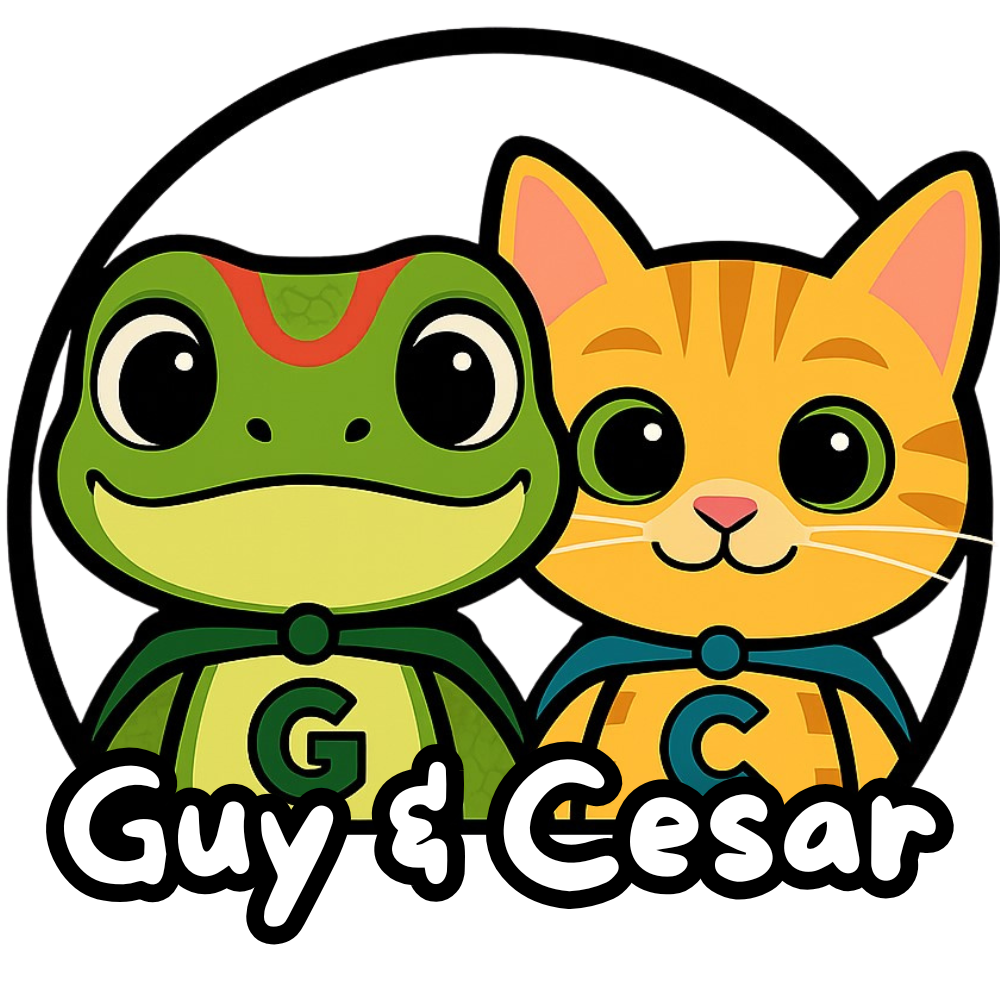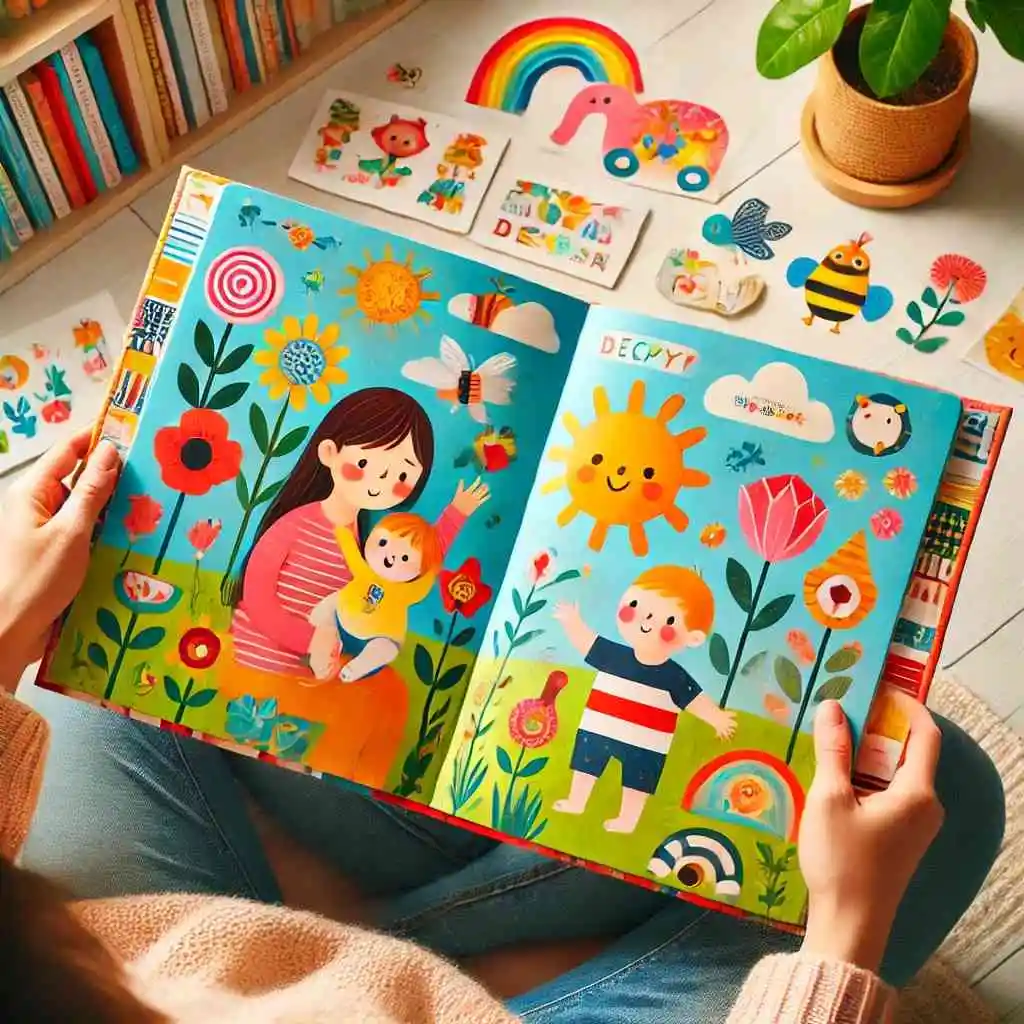Must-Read Titles for Ages 1-5
Engaging Storybooks for Young Minds
Reading to young children is one of the most rewarding activities you can share. It’s a fantastic way to bond, spark imagination, and teach important life lessons. For ages 1-5, books need to be vibrant, engaging, and simple enough to keep their attention. Here are some must-read titles that will delight your little ones and provide meaningful lessons.
“Goodnight Moon” by Margaret Wise Brown
“Goodnight Moon” is a timeless classic that has soothed countless children to sleep. The gentle rhymes and soothing illustrations create a calming bedtime ritual. You can snuggle up with your little one and say goodnight to everything in the room. The repetitive structure helps kids predict what’s coming next, which is comforting and fun.
“The Very Hungry Caterpillar” by Eric Carle

Eric Carle’s “The Very Hungry Caterpillar” is a delightful story that combines beautiful artwork with an engaging narrative. Your child will enjoy watching the caterpillar munch through various foods, learning about counting and days of the week. The transformation into a beautiful butterfly also introduces the concept of growth and change in a magical way.
“Where the Wild Things Are” by Maurice Sendak

“Where the Wild Things Are” takes children on an adventure with Max, who sails to an island of Wild Things. This book encourages imagination and teaches about emotions and the power of creativity. Max’s journey helps children understand that it’s okay to feel wild emotions, and they can always return to the comfort and safety of home.
“Brown Bear, Brown Bear, What Do You See?” by Bill Martin Jr. and Eric Carle
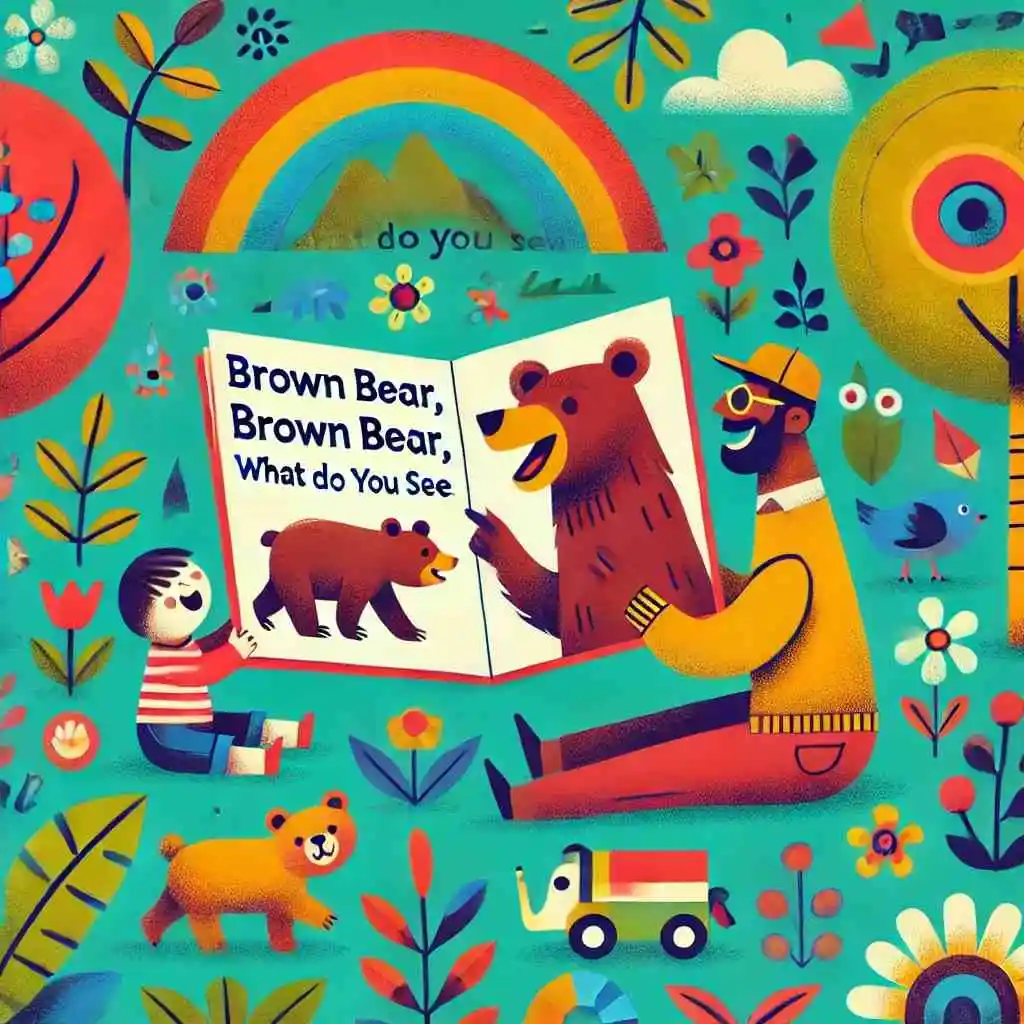
This wonderfully repetitive book helps children learn about colors and animals. “Brown Bear, Brown Bear, What Do You See?” uses rhythmic text and vibrant illustrations to captivate young readers. It’s perfect for helping kids predict what comes next and engage with the story, making reading an interactive and fun experience.
“Guess How Much I Love You” by Sam McBratney
“Guess How Much I Love You” is a tender story about Big Nutbrown Hare and Little Nutbrown Hare. It beautifully illustrates the bond between parent and child. The simple, sweet dialogue shows the limitless nature of love, making it a perfect bedtime read. You’ll love sharing this story with your little one and expressing just how much you care.
“Corduroy” by Don Freeman
“Corduroy” is the heartwarming tale of a teddy bear waiting for a home. When Lisa buys Corduroy, it’s a story of friendship and belonging. The book’s gentle message about acceptance and love resonates deeply with children. They’ll enjoy Corduroy’s adventure through the department store and root for his happy ending.
“The Gruffalo” by Julia Donaldson and Axel Scheffler
“The Gruffalo” tells the clever story of a mouse that outsmarts predators by inventing a fearsome creature. It’s a delightful, rhyming tale that will have your child giggling and guessing what happens next. The mouse’s bravery and quick thinking teach valuable lessons about wit and courage. Plus, the colorful illustrations make every page a joy to explore.
“Chicka Chicka Boom Boom” by Bill Martin Jr. and John Archambault
“Chicka Chicka Boom Boom” is a fun, rhythmic book about the alphabet. As the letters race up the coconut tree, children will enjoy the catchy rhymes and playful storyline. This book makes learning letters exciting and memorable, perfect for early literacy development. Your child will soon be chanting along with you, eager to turn each page.
“Pete the Cat: I Love My White Shoes” by Eric Litwin and James Dean
Pete the Cat’s cool, laid-back attitude and catchy songs make this book an instant hit. “Pete the Cat: I Love My White Shoes” teaches children to stay positive and keep moving forward, no matter what. Pete’s adventures with his white shoes, which change colors as he steps in various things, are both entertaining and educational. The repetitive text and fun illustrations will keep your child engaged and singing along.
“Llama Llama Red Pajama” by Anna Dewdney
“Llama Llama Red Pajama” addresses common bedtime anxieties in a reassuring way. Little Llama’s worries about being alone are soothed by his mama’s loving presence. This book’s rhythmic text and adorable illustrations make it a comforting read. You’ll find it’s a great way to help your child feel secure and loved before drifting off to sleep.
Why These Books Matter

These must-read titles for ages 1-5 offer more than just entertainment. They help develop early literacy skills, foster emotional understanding, and strengthen the bond between you and your child. By reading these books together, you create precious memories and instill a love of reading that will last a lifetime. Each story brings its own unique magic, making learning fun and engaging for your little one. So grab a book, snuggle up, and embark on these delightful literary adventures together.
Engaging Stories for Ages 5-10
The Magic of Imagination
When it comes to captivating the minds of children aged 5-10, nothing works quite like the magic of a good story. At this age, kids are brimming with curiosity and imagination. You can tap into this natural wonder by introducing them to stories that are both engaging and educational. Picture their faces lighting up as they journey through magical lands, solve mysteries with clever characters, or learn important life lessons through the adventures of their favorite heroes. Engaging stories don’t just entertain; they foster a love for reading and learning that can last a lifetime.
Choosing the Right Stories
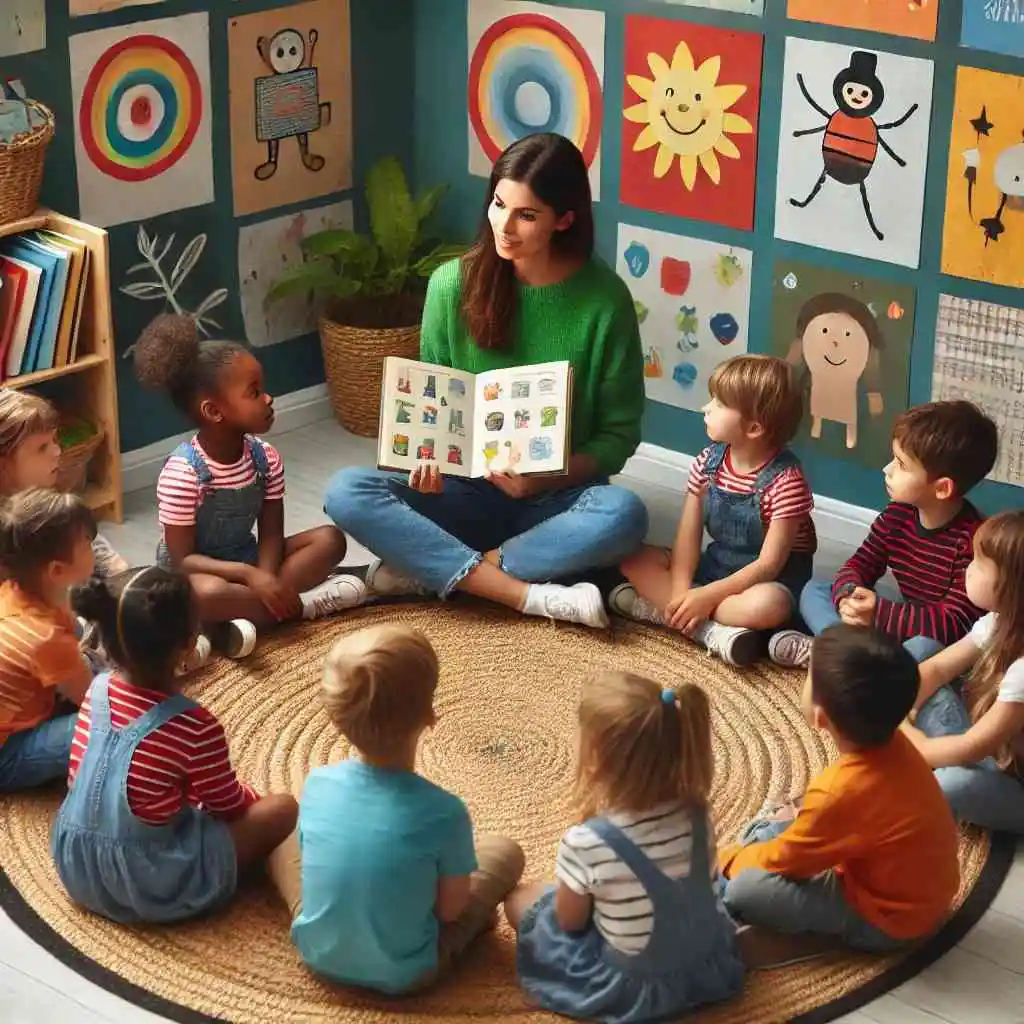
Choosing the right stories for children in this age group can make all the difference. You’ll want to look for books that offer a blend of excitement and educational value. Stories that feature relatable characters, imaginative settings, and age-appropriate challenges are perfect. For instance, tales about brave animals, clever children, or friendly monsters can captivate young readers while subtly teaching them about courage, problem-solving, and friendship. The key is to find stories that resonate with their experiences and interests, making reading a delightful and meaningful activity.
Adventure and Exploration
Kids between 5 and 10 years old are at a stage where they love to explore new worlds and ideas. Adventure stories can be incredibly engaging for them. Whether it’s a tale of a young pirate searching for hidden treasure, a group of friends solving a mystery, or a magical journey through an enchanted forest, these stories can spark their imagination and sense of adventure. You can encourage them to think creatively, ask questions, and develop a deeper understanding of the world around them. Adventure stories not only entertain but also inspire kids to dream big and embark on their own imaginative journeys.
Learning Through Stories
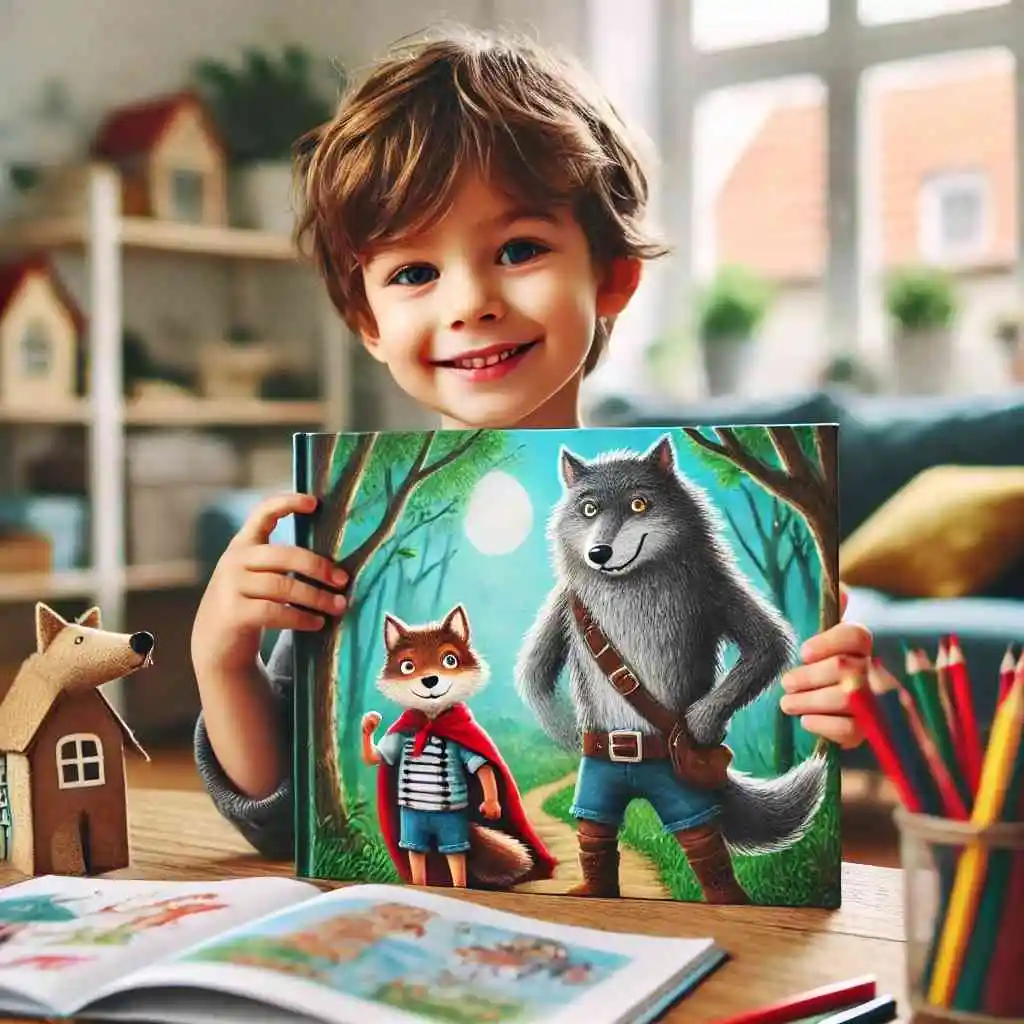
One of the greatest benefits of engaging stories is their ability to teach valuable lessons without feeling like a lesson. Stories can introduce kids to important concepts such as empathy, kindness, and resilience in a way that feels natural and enjoyable. For example, a story about a character who overcomes obstacles and shows determination can inspire kids to develop a growth mindset. Similarly, a tale about teamwork and friendship can highlight the importance of cooperation and understanding. By weaving these themes into captivating narratives, you can help children develop essential life skills while keeping them entertained.
Building Empathy and Understanding
Reading stories about diverse characters and cultures can help children develop empathy and a broader perspective. You can introduce them to tales from different parts of the world, showcasing various traditions, challenges, and ways of life. Stories that highlight inclusivity and celebrate differences can foster a sense of understanding and acceptance. As kids see the world through the eyes of different characters, they learn to appreciate the richness of diversity and the importance of treating everyone with kindness and respect.
Encouraging Interactive Reading
Interactive reading can make stories even more engaging for young readers. You can ask questions, encourage predictions, and involve them in the storytelling process. For instance, pause during a story to ask what they think will happen next, or how a character might feel in a particular situation. This not only keeps them actively engaged but also enhances their comprehension and critical thinking skills. You can also create related activities, such as drawing scenes from the story or acting out parts of the tale, to deepen their connection with the narrative.
Creating a Reading Routine

Establishing a regular reading routine can make storytelling a cherished part of daily life. You can set aside a special time each day for reading, such as before bed or after school. Make it a cozy and enjoyable experience by creating a comfortable reading nook, complete with soft pillows and their favorite stuffed animals. Consistent reading routines not only build a habit but also provide a sense of stability and comfort. Plus, it’s a wonderful way for you to bond with your child, sharing magical moments and creating lasting memories through the love of stories.
Benefits of Reading Aloud
Reading stories aloud to children has numerous benefits. It not only helps them develop listening skills and vocabulary but also strengthens their ability to concentrate and follow along. When you read with expression and enthusiasm, you bring the characters and events to life, making the story more vivid and engaging. This shared activity can also boost their confidence and motivate them to read independently. Plus, the warmth of your voice and the shared experience can create a deep emotional connection, making reading a treasured time for both of you.
Expanding Their Horizons
Introducing children to a wide range of stories can expand their horizons and spark new interests. From fantasy and fairy tales to science fiction and historical adventures, different genres can open up new worlds of possibility. You can encourage them to explore different types of stories and discover what they enjoy most. This exploration can help them develop a diverse and rich literary palette, fostering a lifelong love of reading. By providing a variety of engaging stories, you help them become more curious, open-minded, and eager to learn about the world.
Cultivating a Love for Books
Ultimately, the goal of sharing engaging stories is to cultivate a lifelong love for books and reading. By introducing children to captivating tales and making reading a fun and enriching experience, you set the foundation for a positive relationship with books. This love for reading can support their academic success, enhance their creativity, and provide endless enjoyment throughout their lives. So, dive into the magical world of stories with your child, and watch as their imaginations soar and their love for reading blossoms.
Empowering Reads for Ages 10-15
When it comes to empowering your 10-15-year-old through reading, the right book can make all the difference. At this age, kids are navigating the tricky waters of adolescence. They are seeking independence while still needing guidance. Books that reflect their experiences, aspirations, and challenges can be powerful tools in their growth and development. Let’s dive into some fantastic reads that will inspire, educate, and empower your young readers.
Finding Strength in Characters
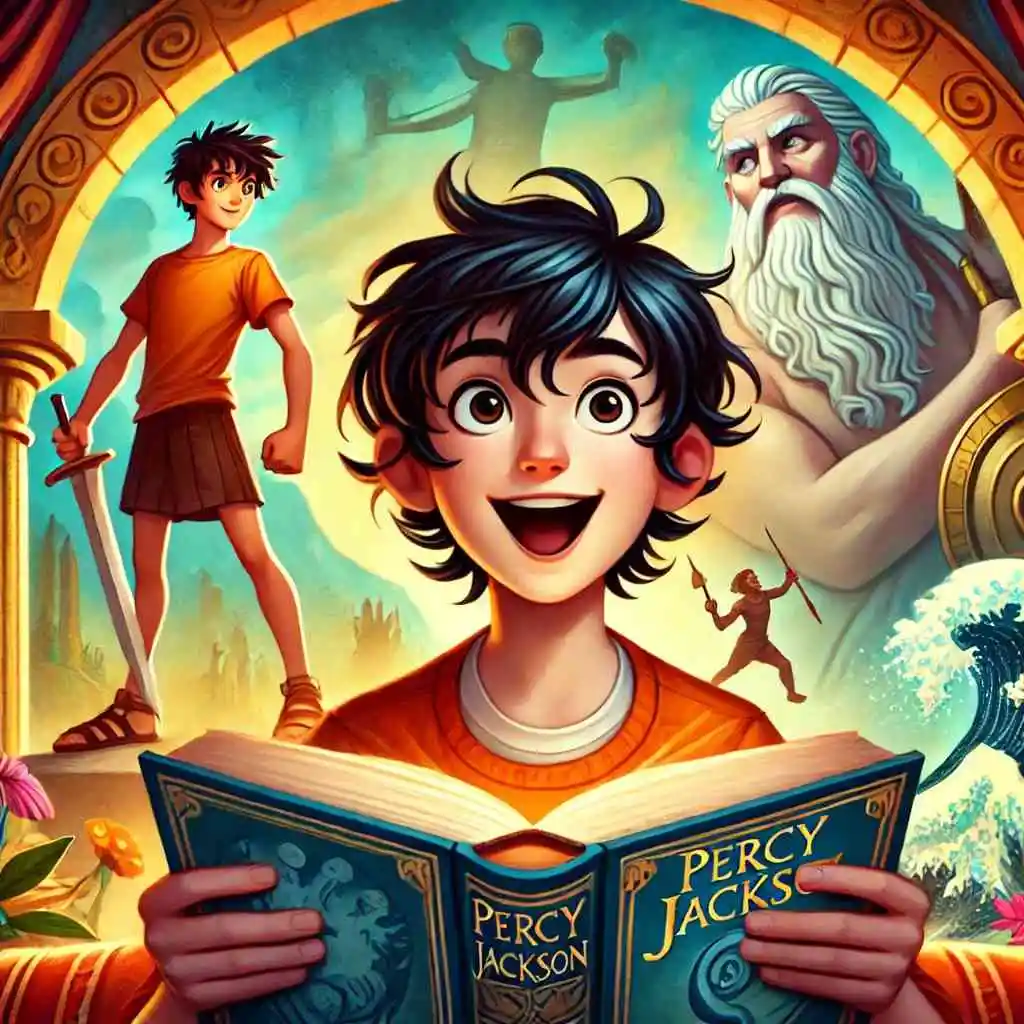
One of the most impactful ways books can empower young readers is through relatable, strong characters. When kids see themselves in the characters they read about, they feel understood and less alone. Characters who overcome obstacles, face fears, and grow through their experiences can provide a sense of hope and resilience.
Books like “Wonder” by R.J. Palacio are perfect for this. The story of Auggie, a boy with a facial difference who faces bullying and ultimately finds acceptance, teaches empathy and perseverance. When your child reads about Auggie’s journey, they learn the importance of kindness and the strength found in embracing one’s uniqueness.
Another great example is “Percy Jackson & The Olympians” series by Rick Riordan. Percy, a demigod with ADHD and dyslexia, embarks on epic adventures, showing that differences can be powerful. Your child will love the action-packed storylines while learning about bravery, loyalty, and self-acceptance.
Learning Through Adventures
Adventure stories are more than just exciting reads; they can teach important life lessons. Books that take kids on thrilling journeys while subtly imparting wisdom can be incredibly engaging and educational.
Consider “The Hunger Games” by Suzanne Collins. While set in a dystopian world, Katniss Everdeen’s story is one of survival, sacrifice, and the fight for justice. Your child will be on the edge of their seat while absorbing lessons on courage, resourcefulness, and the importance of standing up for what’s right.
For a blend of fantasy and real-life lessons, “Harry Potter” by J.K. Rowling is a must-read. Harry’s adventures at Hogwarts teach about friendship, bravery, and the battle between good and evil. The series shows that even in the darkest times, hope and love can prevail.
Fostering Critical Thinking
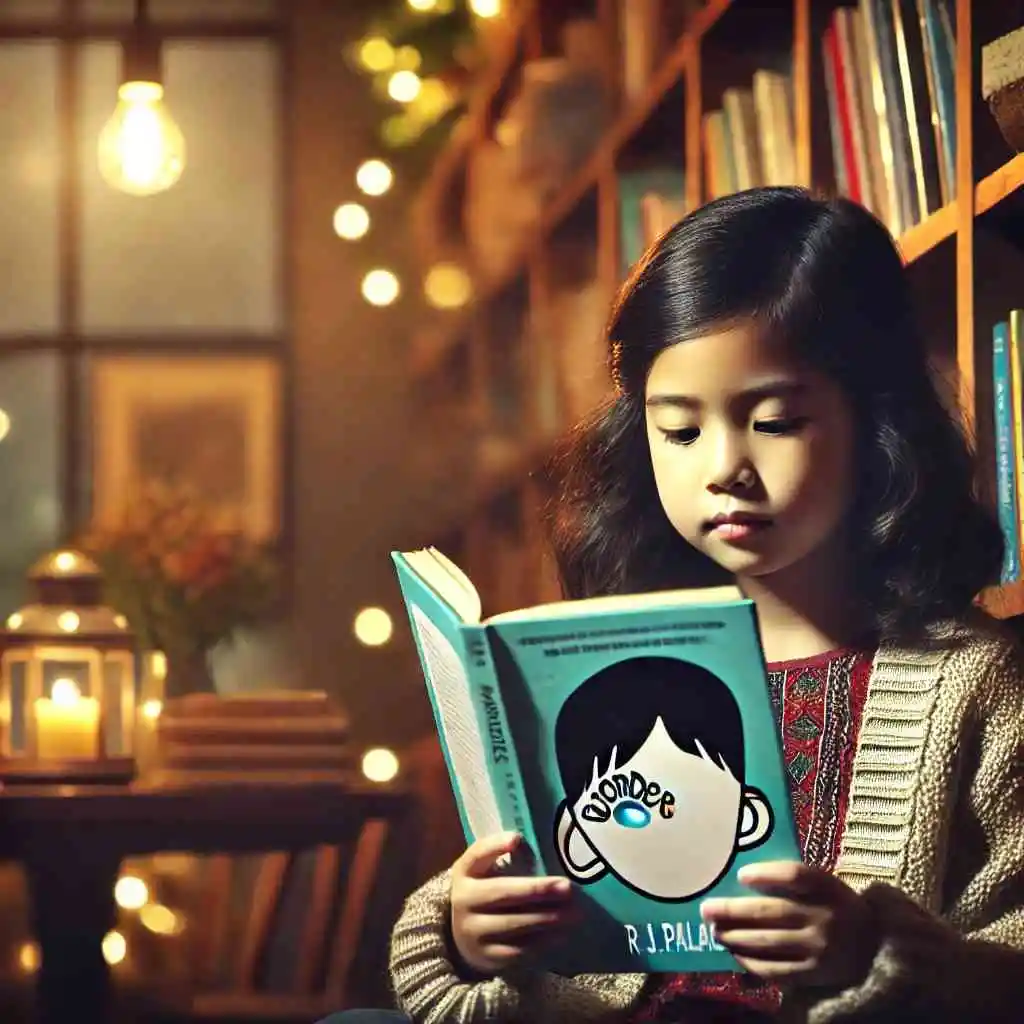
Books that challenge young readers to think critically about the world around them are invaluable. These stories encourage kids to ask questions, form opinions, and understand different perspectives.
“To Kill a Mockingbird” by Harper Lee is a timeless classic that addresses serious themes like racism, justice, and morality. Through the eyes of Scout Finch, your child will learn about empathy and the importance of standing up for what is right, even when it’s difficult.
John Green’s “The Fault in Our Stars” tackles themes of illness, love, and loss with humor and honesty. This book encourages readers to think deeply about life, relationships, and what it means to live a meaningful life, despite hardships.
Building Emotional Intelligence
Reading can also be a powerful way to build emotional intelligence. Books that delve into emotions, relationships, and self-discovery help kids understand and manage their feelings.
“Inside Out & Back Again” by Thanhha Lai, written in verse, tells the story of a young Vietnamese girl’s struggle to adjust to life in America. It’s a beautiful exploration of culture, identity, and resilience. Your child will gain insight into empathy and the complexities of the immigrant experience.
“Stargirl” by Jerry Spinelli is another gem. Stargirl’s uniqueness and the reactions she provokes in others teach about the beauty of individuality and the importance of kindness. Your child will learn to appreciate their own uniqueness and the value of respecting differences in others.
Encouraging Positive Self-Image

Books that promote a positive self-image and self-esteem are crucial for young readers. Stories that highlight the importance of loving oneself and embracing one’s strengths can leave a lasting impact.
In “Dumplin’” by Julie Murphy, the protagonist, Willowdean, enters a beauty pageant despite not fitting the traditional beauty standards. Her journey of self-acceptance and confidence is inspiring. This book can help your child understand that beauty comes in all shapes and sizes, and true confidence comes from within.
“El Deafo” by Cece Bell is a graphic novel that tells the author’s own story of growing up deaf. It’s a heartfelt and humorous tale about finding one’s superpower in a perceived weakness. Your child will learn about the importance of self-acceptance and the strength found in overcoming challenges.
Conclusion
Empowering reads for ages 10-15 are more than just stories; they are gateways to understanding oneself and the world better. By choosing books with strong characters, thrilling adventures, thought-provoking themes, and messages of self-acceptance, you are helping your child build a solid foundation for their personal growth. So, dive into these books with your young reader and watch them discover the power of a great story. Happy reading!
How to Use Books as Teaching Tools
Introduce Topics in a Fun Way
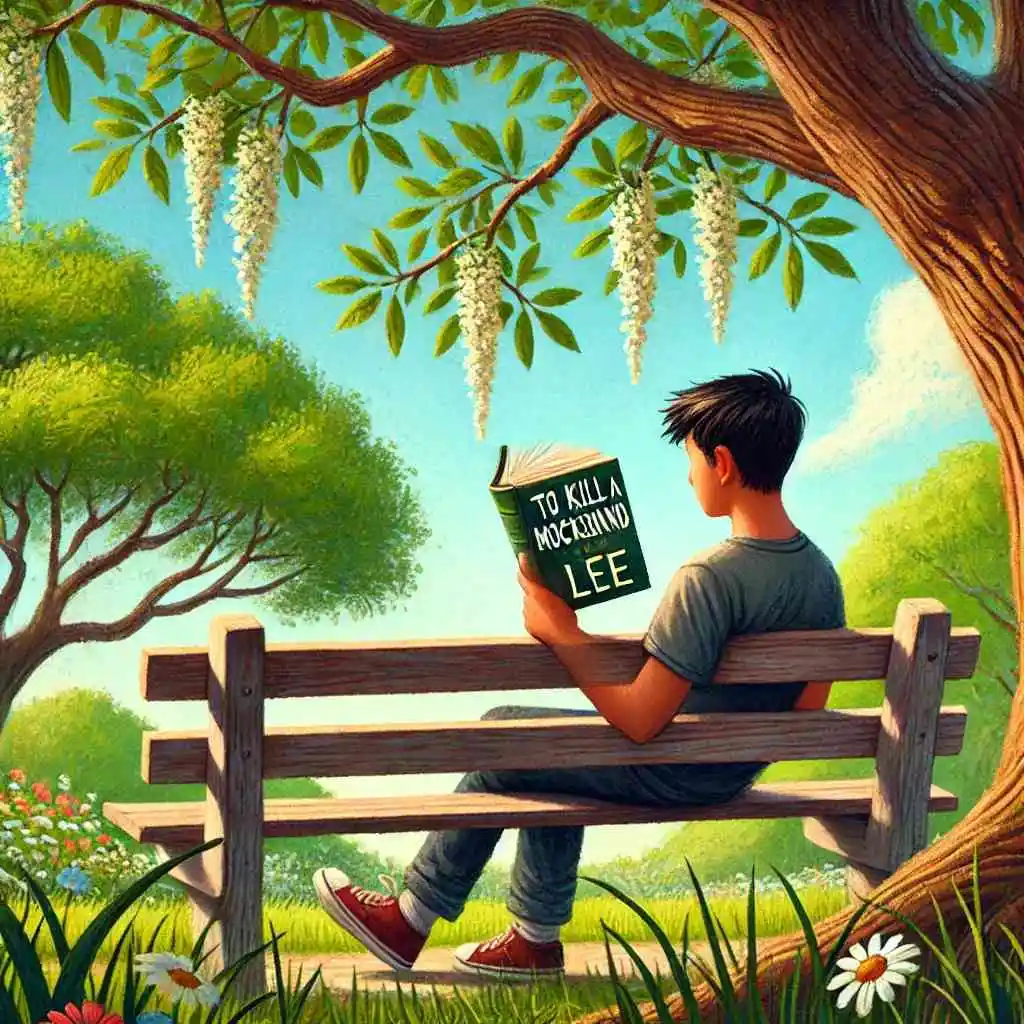
Books are an excellent way to introduce new topics to children in a fun and engaging manner. When you read a book together, you can explore complex subjects in a simple, child-friendly way. For instance, using stories about animals can teach kids about empathy, teamwork, and caring for others. You can use characters they love to explain these concepts, making the learning process enjoyable and memorable.
When children see their favorite characters facing challenges, they become more invested in the story. This investment translates to a deeper understanding of the lesson being taught. Books like “Guy & Cesar’s Big Adventure in Safety Land” are perfect for this. The characters go on exciting adventures that subtly introduce safety concepts. You can discuss the story with your child, asking questions like, “What would you do in that situation?” This sparks critical thinking and helps them apply the lessons to their own lives.
Make Reading Interactive

One of the best ways to use books as teaching tools is by making reading interactive. You can turn storytime into a dynamic activity that involves more than just reading. Pause during the story to ask your child what they think will happen next. This not only keeps them engaged but also encourages them to think ahead and predict outcomes.
You can also have your child act out scenes from the book. For example, if the story involves crossing the street safely, practice this in your living room. Make it a game where they have to look both ways before crossing an imaginary street. This physical activity reinforces the lesson and makes it stick. It’s a fun way to learn while staying active.
Use Books to Spark Discussions
Books can be the perfect starting point for important discussions. After reading a story, you can talk about the themes and messages in the book. Ask open-ended questions like, “How did that character feel?” or “What could they have done differently?” These questions encourage your child to think deeply about the story and its lessons.
For example, if you read a book about dealing with loss, discuss the emotions the characters experience. This can help your child understand and express their own feelings. It also shows them that it’s okay to talk about difficult topics. You can use these discussions to teach empathy and emotional intelligence, which are crucial life skills.
Reinforce Lessons with Activities

You can extend the lessons from books by creating related activities. After reading a story, you can craft projects that tie into the book’s themes. For example, if you read a story about recycling, you can have a recycling scavenger hunt around your house. This not only reinforces the lesson but also provides a hands-on learning experience.
Another idea is to draw pictures or make crafts related to the story. If the book is about different emotions, you can create emotion masks together. This activity helps children understand and identify different feelings. It’s a creative way to reinforce what they’ve learned from the book.
Use Books to Build Vocabulary
Books are a great tool for expanding your child’s vocabulary. While reading, you can introduce new words and explain their meanings. This not only improves their language skills but also makes them more confident in using new words. Choose books that use rich and varied language to expose your child to a broader vocabulary.
You can turn this into a game by creating a word jar. Every time you come across a new word, write it down and put it in the jar. At the end of the week, you can review the words together and see how many your child remembers. This fun activity encourages learning and retention.
Create a Routine

Consistency is key when using books as teaching tools. Create a regular reading routine that your child can look forward to. Whether it’s bedtime stories or a quiet afternoon reading session, having a routine helps instill a love for reading. It also makes learning a natural and enjoyable part of their day.
You can make this time special by creating a cozy reading nook. Fill it with your child’s favorite books and some comfy pillows. This dedicated space makes reading feel like a special treat, encouraging your child to look forward to it. Plus, a routine helps reinforce the lessons learned in the books.
Connect Books to Real-Life Experiences
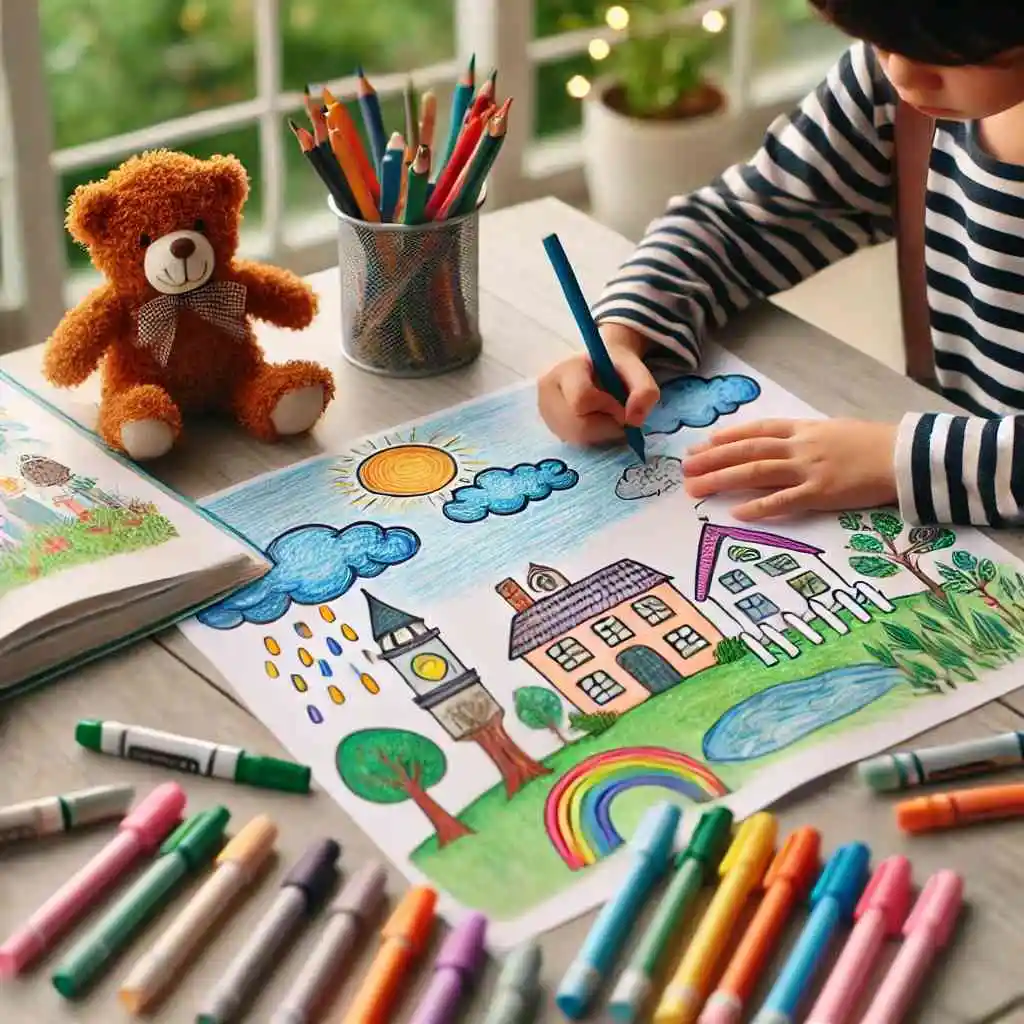
Books can help bridge the gap between stories and real-life experiences. After reading a book about visiting the dentist, take your child to a real dentist appointment. Discuss the similarities between the book and the visit. This connection helps your child understand and relate to their own experiences.
Similarly, if you read a book about different cultures, you can explore those cultures through food, music, and activities. This hands-on approach makes the lessons more tangible and memorable. It also broadens your child’s understanding of the world around them.
Encourage Questions and Curiosity
Encourage your child to ask questions about the stories you read. This curiosity drives deeper learning and understanding. When they ask questions, take the time to explore the answers together. This not only satisfies their curiosity but also teaches them how to seek information and learn independently.
For instance, if a book mentions a historical event, look it up together. Find more books or online resources to expand on the topic. This collaborative learning approach shows your child that books are just the beginning of their exploration and learning journey.
In conclusion, using books as teaching tools is an effective and enjoyable way to educate children. By making reading interactive, sparking discussions, reinforcing lessons with activities, building vocabulary, creating routines, connecting books to real life, and encouraging questions, you can turn every book into a valuable learning experience. Happy reading!
